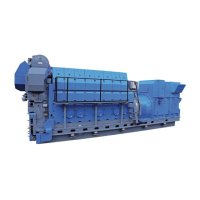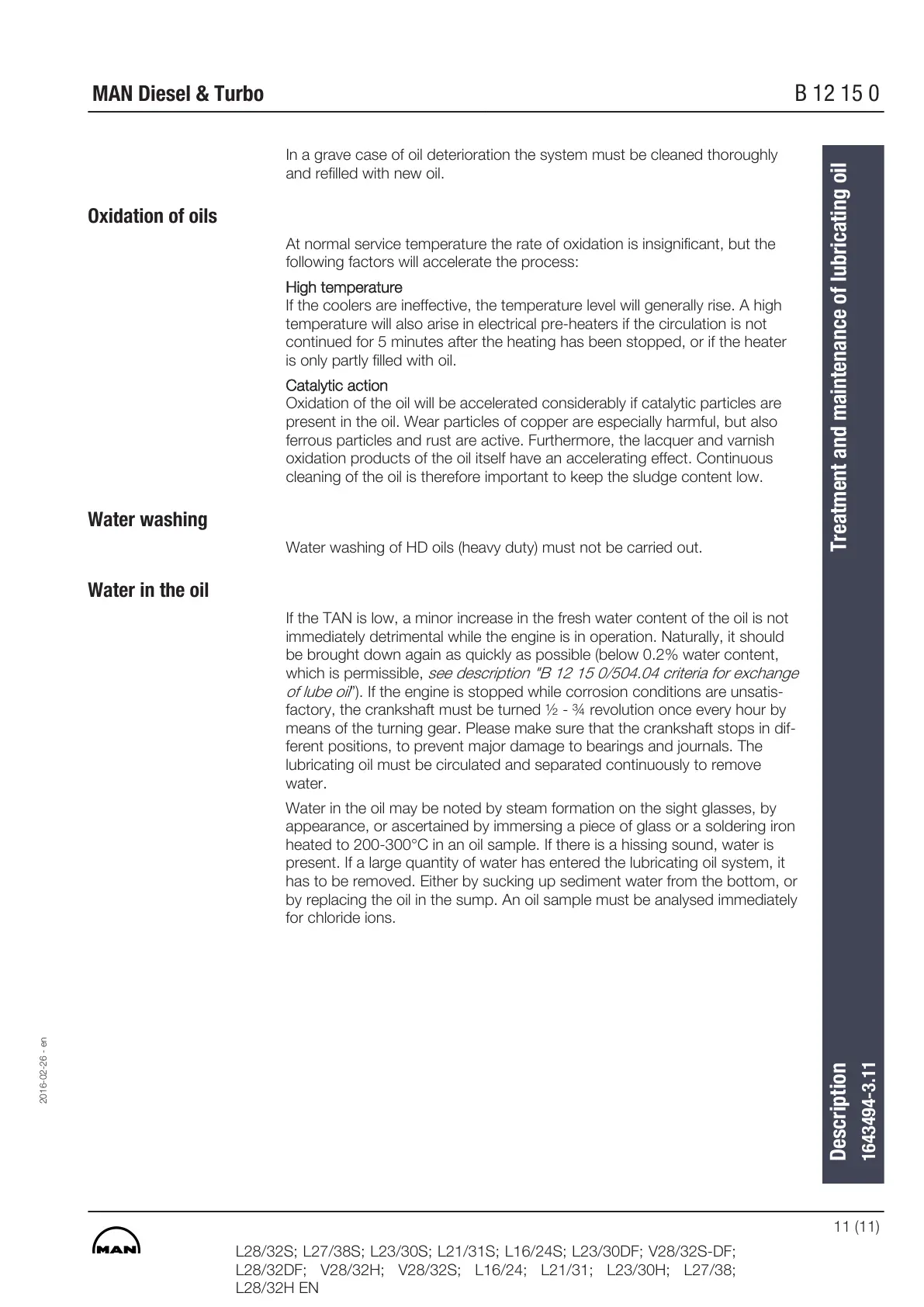In a grave case of oil deterioration the system must be cleaned thoroughly
and refilled with new oil.
Oxidation of oils
At normal service temperature the rate of oxidation is insignificant, but the
following factors will accelerate the process:
High temperature
If the coolers are ineffective, the temperature level will generally rise. A high
temperature will also arise in electrical pre-heaters if the circulation is not
continued for 5 minutes after the heating has been stopped, or if the heater
is only partly filled with oil.
Catalytic action
Oxidation of the oil will be accelerated considerably if catalytic particles are
present in the oil. Wear particles of copper are especially harmful, but also
ferrous particles and rust are active. Furthermore, the lacquer and varnish
oxidation products of the oil itself have an accelerating effect. Continuous
cleaning of the oil is therefore important to keep the sludge content low.
Water washing
Water washing of HD oils (heavy duty) must not be carried out.
Water in the oil
If the TAN is low, a minor increase in the fresh water content of the oil is not
immediately detrimental while the engine is in operation. Naturally, it should
be brought down again as quickly as possible (below 0.2% water content,
which is permissible,
see description "B 12 15 0/504.04 criteria for exchange
of lube oil
”). If the engine is stopped while corrosion conditions are unsatis-
factory, the crankshaft must be turned ½ - ¾ revolution once every hour by
means of the turning gear. Please make sure that the crankshaft stops in dif-
ferent positions, to prevent major damage to bearings and journals. The
lubricating oil must be circulated and separated continuously to remove
water.
Water in the oil may be noted by steam formation on the sight glasses, by
appearance, or ascertained by immersing a piece of glass or a soldering iron
heated to 200-300°C in an oil sample. If there is a hissing sound, water is
present. If a large quantity of water has entered the lubricating oil system, it
has to be removed. Either by sucking up sediment water from the bottom, or
by replacing the oil in the sump. An oil sample must be analysed immediately
for chloride ions.
2016-02-26 - en
Description
Treatment and maintenance of lubricating oil
1643494-3.11
MAN Diesel & Turbo
B 12 15 0
L28/32S; L27/38S; L23/30S; L21/31S; L16/24S; L23/30DF; V28/32S-DF;
L28/32DF; V28/32H; V28/32S; L16/24; L21/31; L23/30H; L27/38;
L28/32H EN
11 (11)

